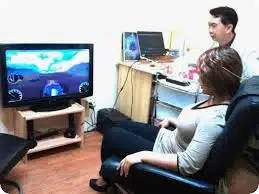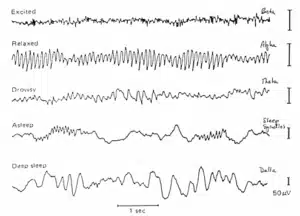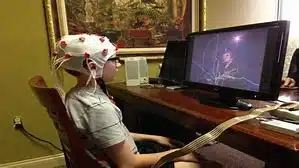Neuro-feedback for ADHD

ADHD is a brain-based disorder, meaning that those who experience symptoms of ADHD are experiencing a level of dysregulation in their brain circuitry. When a child has trouble concentrating in history class or a co-worker at work cannot seem to remember to get things in on time, this is not an act of carelessness or a choice.
In people with ADHD, their brains are wired differently and they may not have the ability to attend or concentrate when there is no immediate gratification present. People with ADHD utilize medication, exercise, therapy and many other self-help techniques to manage their symptoms so they can effectively succeed in all areas of their life.
It is also becoming quite popular for people with ADHD to “train their brain”. Neurofeedback is a treatment which works to increase appropriate brain functioning. Science has proven that our brains are malleable and we can teach our brain to focus and attend.
Brainwave Patterns
Neurofeedback is performed using an EEG machine which measure’s electrical activity in the brain. Our brains emit electrical activity in the form of "brain waves" and the four waves include alpha, beta, delta, and theta.
Beta waves are fast and are present in high frequency when we are attended, concentrated and focused. Theta waves are very slow and occur when a person is very drowsy, tired and out of it. In individuals with ADHD, their EEG patterns show a higher frequency of theta waves and a lower frequency of beta waves.
Session one of Neurofeedback
In the first session of neurofeedback, an individual's brain wave activity needs to be mapped out. A person wears a helmet and has electrodes attached to his or her scalp while performing simple cognitive tasks (reading out loud etc.). The brain wave activity occurring in this cognitive task is recorded and processed by a computer.
After the initial session, clinicians can see the brain wave frequencies being emitted and can target which frequencies need to be increased and which need to be decreased.
Neurofeedback is personalized as each person’s individual brainwave pattern is being compared to what a focused attended EEG would look like. The goal of neurofeedback is to modify a patient's brain wave activity to promote a focused and aroused mental state.
Principles of Learning
Neurofeedback can best be explained through the principle of operant conditioning. One way people and animals learn is through operant conditioning- when certain actions are rewarded, these actions will be increased. For example, if you give your child a candy every time she makes her bed, she will begin to increase her behavior of making her bed.
Also, if certain actions are punished, these actions will decrease. For example, if you take away your child’s cell phone every time she talks back to you, she will start to talk back less because of these consequences.
Neurofeedback sessions going forward
During the neuro-feedback session, the goal is to promote beta waves and decrease theta waves. Individuals either watch a video or play a video game and through their focused or unfocused state, they control the stimuli via the electrodes they are attached too. When the person is not focused in the neurofeedback session, the video may freeze or he or she will lose points in the video game.
The brain is being rewarded for focusing and punished for not focusing. Neurofeedback work to self-regulates rather than deal with symptoms after the fact. This is how the brain learns to focus- after many sessions, the brain learns that in order to gain points or to watch the video, it must concentrate.
Neurofeedback can be the right choice for you!
Neurofeedback has been researched in comparison to medication and has been found to be successful. More and more studies are showing that children can increase their attentive state and decrease hyperactivity with neurofeedback sessions.
Neurofeedback should be supplemented with medication and or therapy depending on the severity of the symptoms. Neurofeedback training varies from place to place, so speak to your physician or mental health clinical if you feel this is right for you and your child.


